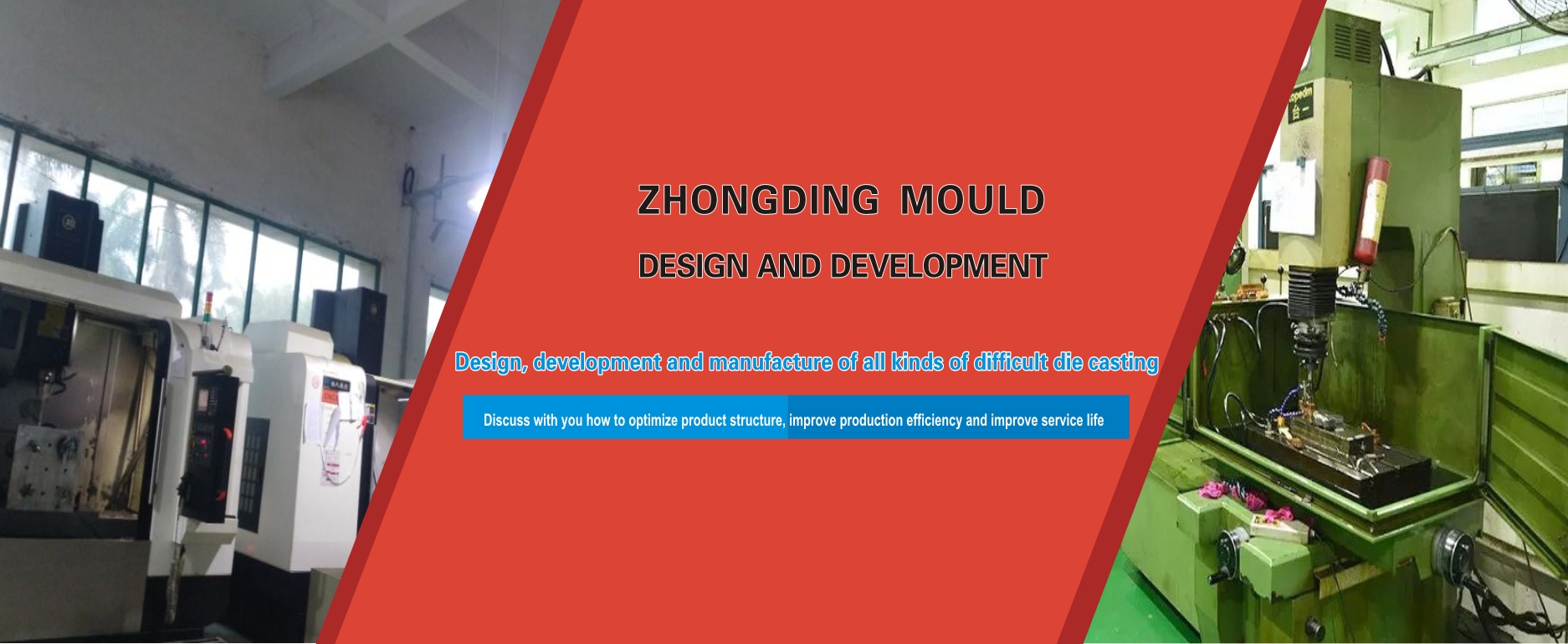-
-
What are the common problems of aluminium alloy die casting dies?
Release time:2019/6/4 0:57:26 | Source of information:Dongguan zhongding precision mould co. LTD
1) Cold Stripe:
Reason: The temperature at the front of the melt soup is too low and there are traces when it overlaps.
Improvement methods:
1. Check whether the wall thickness is too thin (designed or manufactured), and the thinner area should be filled directly.
2. Check whether the shape is not easy to fill; if the distance is too far, the closed area (such as fin, bulge), the blocked area, the corner is too small, it is not easy to fill. And pay attention to whether there are ribs or cold spots.
3. To shorten the filling time. The methods of shortening the filling time are as follows:
4. Change filling mode.
5. Ways to raise die temperature:...
6. Increase the temperature of the soup.
7. Check alloy composition.
8. Increasing the airway may be useful.
9. Vacuum devices may be useful.
2).
Reason:
1. Shrinkage stress.
2. Stress cracking when ejecting or flanging.
Improvement methods:
1. Increase the roundness.
2. Check for hot spots.
3. Change of supercharging time (cold chamber unit).
4. Increase or shorten the closing time.
5. Increase the drawing angle.
6. Increase ejection sales.
7. Check whether the die is dislocated or deformed.
8. Check alloy composition.
3) stomata:
Reason:
1. Air is mixed in the soup.
2. Source of gas: melting, in the feeding tube, in the die, release agent.
Improvement methods:
1. Appropriate slow speed.
2. Check whether the channel turns smoothly and the section area decreases gradually.
3. Check whether the area of the escape passage is large enough, whether it is blocked, and whether it is located in the last filling place.
4. Check whether the release agent is sprayed too much and the mould temperature is too low.
5. Use vacuum.
4) cavitation erosion:
Cause: Because of the sudden decrease of pressure, the gas in molten soup suddenly expands and impacts the mould, resulting in the damage of the mould.
Improvement methods:
The cross section area of the runner should not change rapidly.
5) shrinkage cavity:
Cause: When metal solidifies from liquid to solid, the space occupied becomes smaller. Without metal supplement, shrinkage will form. Usually occurs at slower solidification.
Improvement methods:
1. Increase pressure.
2. Changing die temperature. Local cooling, spraying agent, reducing die temperature. Sometimes only changing the position of shrinkage holes, not shrinkage holes.
6) peeling:
Reasons: 1. Bad filling mode, resulting in overlap of molten soup.
2. Mold deformation, resulting in overlap of molten soup.
3. Inclusive oxide layer.
Improvement methods:
1. Switch to high speed ahead of time.
2. Shorten filling time.
3. Change filling mode, gate position and gate speed.
4. Check the strength of the die.
5. Check whether the pin die device is in good condition.
6. Check for inclusion of oxide.
7).
Reasons: The first layer of molten soup cools rapidly on the surface, while the second layer of molten soup flows through the surface and fails to melt the first layer, but it has enough fusion, resulting in different structures.
Improvement methods:
1. Improving filling mode.
2. Shorten filling time.
8. Poor flowing holes:
Reasons: The molten soup flows too slowly, or is too cold, or the filling mode is not good, so there are holes in the solidified metal joint.
Improvement methods:
1. The same method is used to improve the cold grain.
2. Check whether the temperature of the molten soup is stable.
3. Check whether the warm filling of the mould is stable.
9. Faces on the die splitting surface:
Cause: It may be shrinkage or stomata.
Improvement methods:
1. If the hole shrinks, reduce the gate thickness or the overflow well inlet thickness.
2. Cooling gate.
3. If air hole, pay attention to exhaust or exhaust.
10). Edge:
Reasons: 1. Insufficient clamping force.
2. Bad die closure.
3. Insufficient die strength.
4. The temperature of the soup is too high.
11. Shrinkage:
Cause: Shrinkage occurs below the surface of the pressing part.
Improvement methods:
1. The same method to improve shrinkage.
2. Local cooling.
3. Heating the other side.
12. Carbon deposition:
Cause: Removal agent or other impurities accumulate on the die.
Improvement methods:
1. Reduce the spraying amount of release agent.
2. Raise the die temperature.
3. Choose suitable release agent.
4. Use soft water diluent.
13. Bubble:
Cause: Gas coils are under the surface of castings.
Improvement methods:
1. Reduce entrainment.
2. Cooling or anti-low die temperature.
14. Viscose die:
Reason:
1. Zinc deposits on the die surface.
2. The molten soup impacts the die surface and causes damage.
Improvement methods:
1. Reduce die temperature.
2. Reduce the roughness of the scratch surface.
3. Increase the drawing angle.
4. coating.
5. Change filling mode.
6. Reduce gate speed
 Person:Mr Ye
Person:Mr Ye


